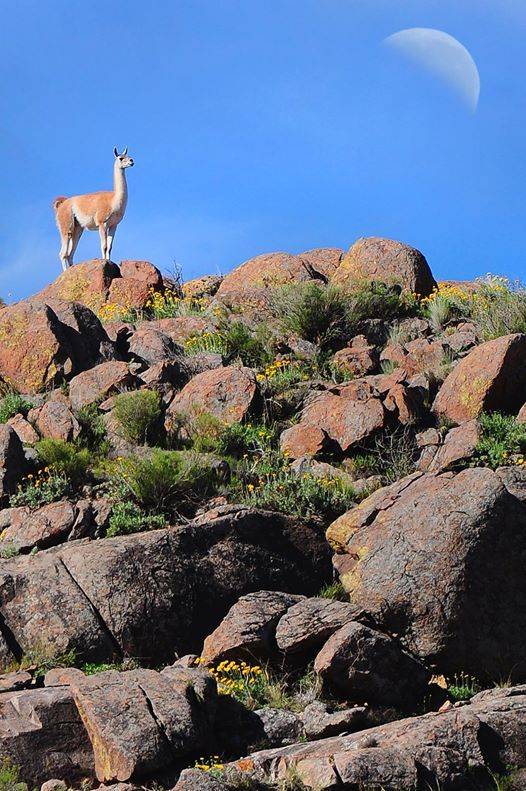Argentina, a country known for its diverse landscapes, rich history, and vibrant culture, is also home to some of the most breathtaking national parks in the world. From the towering peaks of the Andes to the vast wetlands of the northeast, Argentina’s national parks showcase an incredible variety of ecosystems and wildlife.
Whether you’re an avid hiker, a nature enthusiast, or simply someone looking to explore the great outdoors, Argentina’s national parks offer something for everyone. In this comprehensive guide, we’ll take you through some of the most remarkable national parks in the country, highlighting their unique features, must-see attractions, and tips for making the most of your visit.
The Importance of Argentina’s National Parks
Contents
Argentina’s national parks are not just tourist destinations; they play a crucial role in preserving the country’s natural heritage. These protected areas safeguard a wide array of ecosystems, from subtropical rainforests and arid deserts to fertile plains and icy glaciers.
They provide habitat for a diverse range of flora and fauna, many of which are endemic or endangered. In addition to their ecological significance, the parks also hold cultural and historical importance, with many sites featuring indigenous heritage and early settler history.
Visiting Argentina’s national parks is an opportunity to connect with nature, learn about the country’s rich biodiversity, and support conservation efforts. As you explore these natural wonders, you’ll gain a deeper appreciation for the beauty and fragility of Argentina’s landscapes.
1. Iguazú National Park: A UNESCO World Heritage Site
One of the most iconic of Argentina’s national parks, Iguazú National Park is located in the northeast of the country, on the border with Brazil. The park is best known for the Iguazú Falls, one of the largest and most spectacular waterfall systems in the world. Spanning 2.7 kilometers and consisting of 275 individual falls, the Iguazú Falls are a breathtaking sight to behold.
Highlights
- Garganta del Diablo (Devil’s Throat): The most famous and dramatic section of the falls, Garganta del Diablo is a U-shaped chasm where the water plunges 80 meters into the abyss below. The roar of the water and the mist that rises from the falls create an unforgettable sensory experience.
- Flora and Fauna: The park is home to over 2,000 plant species and a diverse array of wildlife, including jaguars, tapirs, howler monkeys, and a variety of bird species such as toucans and hummingbirds.
- Activities: Visitors can explore the park’s extensive trail system, take boat rides that bring them close to the falls, or participate in guided tours that offer insights into the park’s ecology and history.
Tips for Visiting
- Best Time to Visit: The park is open year-round, but the best time to visit is during the rainy season (December to February), when the falls are at their most powerful.
- Getting There: The park is easily accessible by bus or car from the nearby city of Puerto Iguazú, which has an airport with flights from Buenos Aires and other major cities.
2. Los Glaciares National Park: A land of ice and stone of Argentina’s national parks
Los Glaciares National Park, located in the southern Patagonian region, is one of Argentina’s most spectacular natural reserves. The park is home to some of the world’s most stunning glaciers, including the famous Perito Moreno Glacier, as well as the towering peaks of the Andes, such as Mount Fitz Roy.
Highlights
- Perito Moreno Glacier: This massive glacier is one of the few in the world that is still advancing. Visitors can witness the awe-inspiring sight of huge chunks of ice calving off the glacier and crashing into the waters of Lake Argentino.
- Mount Fitz Roy: Known for its jagged, dramatic peaks, Mount Fitz Roy is a popular destination for hikers and climbers. The area offers numerous trails, ranging from easy walks to challenging ascents.
- Lago Argentino: The largest freshwater lake in Argentina, Lago Argentino is a stunning backdrop to the park’s glaciers. Boat tours are available to explore the lake and get closer to the glaciers.
Tips for Visiting
- Best Time to Visit: The best time to visit Los Glaciares is during the Southern Hemisphere’s summer months (November to March), when the weather is milder and the days are longer.
- Getting There: The park is accessible from the town of El Calafate, which has an airport with flights from Buenos Aires. From El Calafate, visitors can take buses or tours to the park.
3. Nahuel Huapi National Park: The Oldest of Argentina’s National Parks
Established in 1934, Nahuel Huapi is Argentina’s oldest national park. Located in the Patagonia region, the park encompasses a vast area of mountains, forests, and lakes, including the picturesque Nahuel Huapi Lake. The park is a paradise for outdoor enthusiasts, offering a wide range of activities such as hiking, fishing, kayaking, and skiing.
Highlights
- Nahuel Huapi Lake: This large, glacial lake is the centerpiece of the park and is surrounded by dense forests and snow-capped mountains. The lake is a popular spot for water sports and boat tours.
- Cerro Catedral: One of the best ski resorts in South America, Cerro Catedral is a must-visit for winter sports enthusiasts. The mountain also offers excellent hiking opportunities during the summer.
- Arrayanes Forest: This unique forest is home to rare Arrayán trees, which have cinnamon-colored bark and can live for hundreds of years. A visit to this forest feels like stepping into a fairytale.
Tips for Visiting
- Best Time to Visit: The park is a year-round destination, with skiing in the winter (June to September) and hiking, fishing, and boating in the summer (December to March).
- Getting There: The park is accessible from the town of San Carlos de Bariloche, which has an airport with flights from Buenos Aires. Bariloche is also a hub for bus and car travel to other parts of Patagonia.
4. Tierra del Fuego National Park: The Argentina’s National Parks at the end of the World
Tierra del Fuego National Park is the southernmost of Argentina’s national parks, located on the archipelago of Tierra del Fuego at the tip of South America. The park is characterized by its rugged coastline, dense forests, and pristine lakes. It offers visitors the chance to experience the raw beauty of the sub-Antarctic wilderness.
Highlights
- Beagle Channel: Named after the ship that carried Charles Darwin on his famous voyage, the Beagle Channel runs along the park’s southern edge. Boat tours on the channel offer stunning views of the park’s mountains and wildlife, including seals, sea lions, and penguins.
- Lago Roca: This beautiful lake is surrounded by forests and mountains and is a popular spot for picnicking, fishing, and hiking.
- End of the World Train: This historic train takes visitors on a scenic journey through the park, offering a unique way to experience the landscapes of Tierra del Fuego.
Tips for Visiting
- Best Time to Visit: The best time to visit is during the summer months (December to March), when the weather is milder and the days are longer.
- Getting There: The park is accessible from the city of Ushuaia, which has an airport with flights from Buenos Aires. Ushuaia is also the starting point for many Antarctic cruises.
5. Talampaya national park: A journey through time
Talampaya National Park, located in the province of La Rioja, is a UNESCO World Heritage Site known for its stunning red rock formations and rich paleontological history. The park’s dramatic landscapes are reminiscent of the American Southwest, with towering cliffs, deep canyons, and vast desert plains.
Highlights
- Talampaya Canyon: The park’s main attraction, Talampaya Canyon, is a breathtaking sight. The canyon’s sheer walls rise over 150 meters and are adorned with ancient petroglyphs created by the region’s indigenous peoples.
- Paleontological Sites: Talampaya is one of the most important paleontological sites in Argentina, with fossils dating back to the Triassic period. Guided tours offer visitors the chance to learn about the park’s prehistoric past and see fossilized remains of ancient reptiles and plants.
- Wildlife: The park is home to a variety of wildlife, including guanacos, foxes, and condors. Birdwatchers will be particularly impressed by the diverse avian species that inhabit the area.
Tips for Visiting
- Best Time to Visit: The best time to visit is during the cooler months (April to October), as temperatures can soar during the summer.
- Getting There: The park is accessible from the town of Villa Unión, which is a few hours’ drive from La Rioja, the provincial capital. Guided tours are recommended to fully experience the park.
6. El Impenetrable national park: Argentina’s National park hidden treasure
El Impenetrable National Park, located in the Chaco region of northern Argentina, is one of the country’s newest national parks. Established in 2014, the park protects a vast area of subtropical forest and savanna, known for its dense vegetation and remote wilderness. The park’s name, “El Impenetrable,” reflects the difficulty of navigating its thick forests and wetlands, making it a true adventure for intrepid travelers.
Highlights
- Biodiversity: El Impenetrable is home to an incredible diversity of wildlife, including jaguars, pumas, tapirs, and giant anteaters. The park is also a birdwatcher’s paradise, with over 300 species of birds recorded in the area.
- Cultural Heritage: The park is rich in indigenous history, with many sites of cultural significance to the Wichí, Qom, and Moqoit peoples. Visitors can learn about the traditional lifestyles and crafts of these indigenous communities.
- Adventure Activities: Due to its remote location and challenging terrain, El Impenetrable offers opportunities for off-the-beaten-path exploration, including hiking, birdwatching, and wildlife photography.
Tips for Visiting
- Best Time to Visit: The best time to visit is during the dry season (May to October), when temperatures are more comfortable, and wildlife is easier to spot.
- Getting There: The park is accessible from the town of Juan José Castelli, which is about a 5-hour drive from Resistencia, the capital of Chaco province. Due to the park’s remoteness, it is recommended to visit with a guide.
7. Los Alerces National Park: A living fossil forest
Los Alerces National Park, located in the Andes of Patagonia, is named after the ancient alerce trees that dominate its forests. Some of these trees are over 2,600 years old, making them among the oldest living organisms on Earth. The park’s lush forests, crystal-clear lakes, and snow-capped mountains create a stunning natural environment that feels almost primordial.
Highlights
- Alerce Trees: The park’s star attraction, the alerce trees, are a sight to behold. These towering giants can reach heights of over 70 meters and diameters of more than 3 meters. A visit to the Alerce Milenario, a 2,600-year-old tree, is a must.
- Futalaufquen Lake: This large, glacial lake is a popular spot for fishing, kayaking, and swimming. The lake’s turquoise waters are surrounded by dense forests and offer stunning views of the Andes.
- Trails and Hiking: Los Alerces offers a range of hiking trails, from short walks to multi-day treks. The trails provide access to some of the park’s most beautiful landscapes, including waterfalls, rivers, and panoramic viewpoints.
Tips for Visiting
- Best Time to Visit: The best time to visit is during the summer months (December to March), when the weather is warm and the trails are open.
- Getting There: The park is accessible from the town of Esquel, which has an airport with flights from Buenos Aires. Esquel is also a hub for bus and car travel to other parts of Patagonia.
Conclusion
Argentina’s national parks are a testament to the country’s natural beauty and ecological diversity. Each park offers a unique experience, from the thundering waterfalls of Iguazú to the ancient forests of Los Alerces. Whether you’re drawn to the icy landscapes of Patagonia, the arid deserts of the northwest, or the lush rainforests of the northeast, there’s a national park in Argentina that will captivate your senses and leave you with unforgettable memories.
Exploring Argentina’s national parks is more than just a journey through stunning landscapes; it’s an opportunity to connect with the natural world, learn about conservation efforts, and experience the rich cultural heritage of the regions they protect. So pack your bags, lace up your hiking boots, and get ready to embark on an adventure through the wonders of Argentina’s national parks









